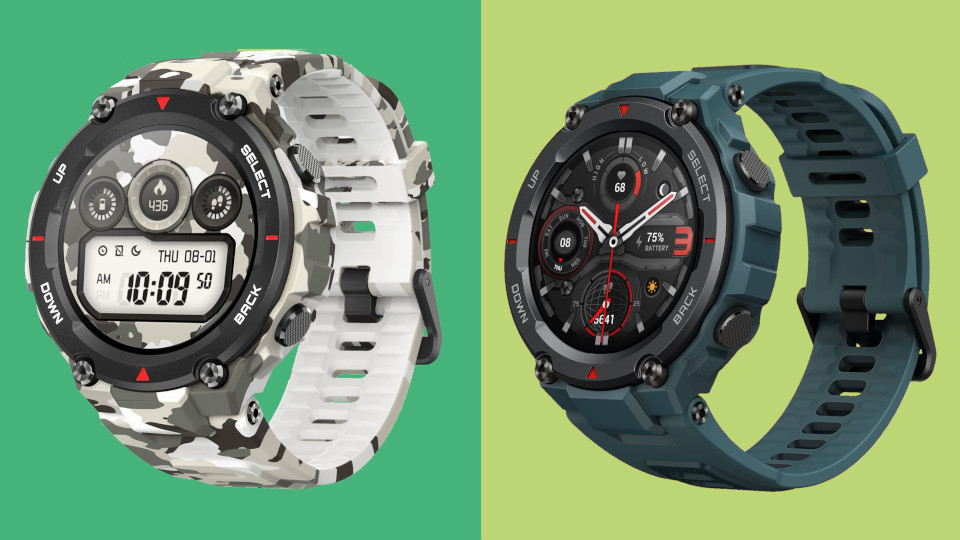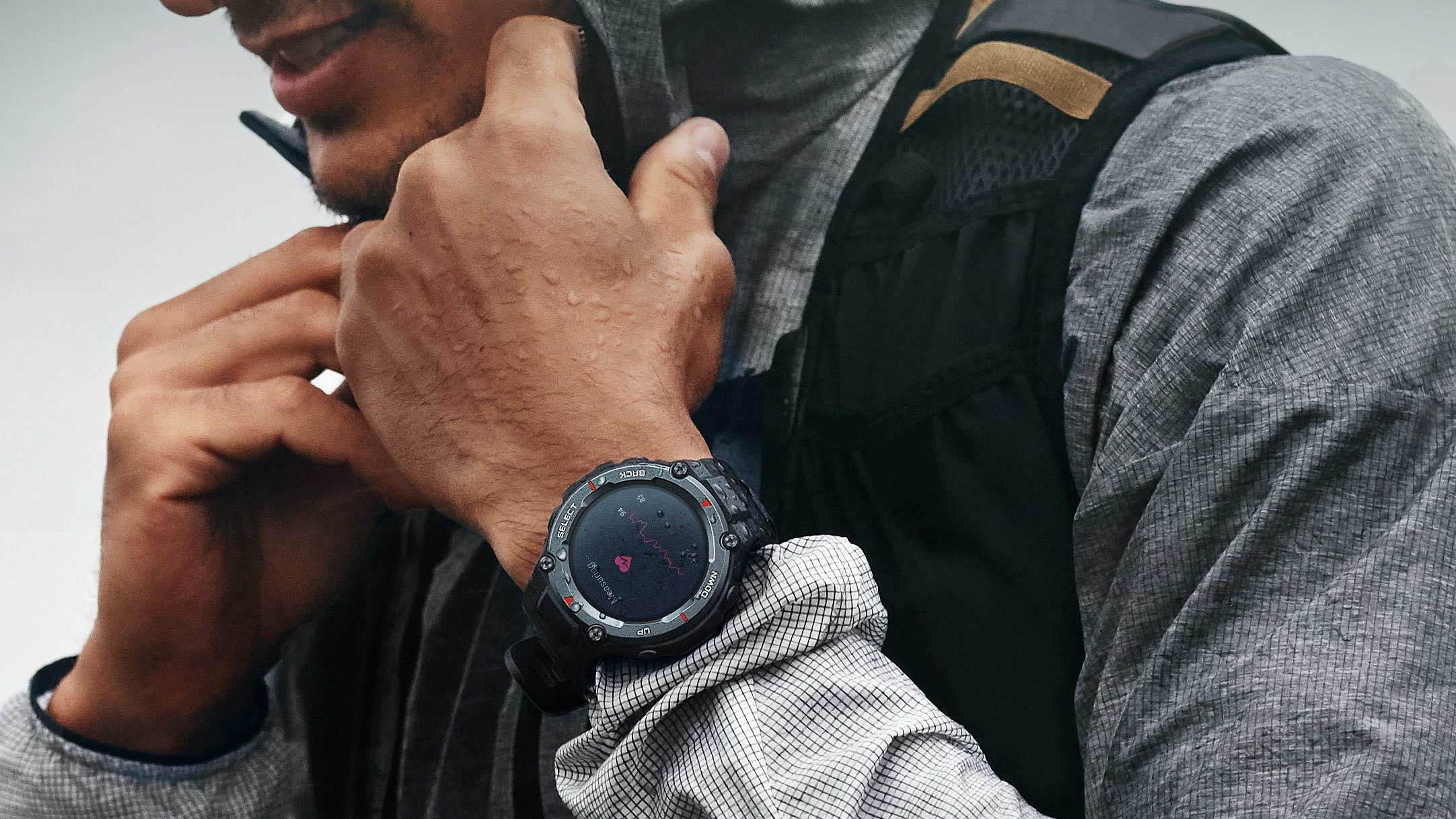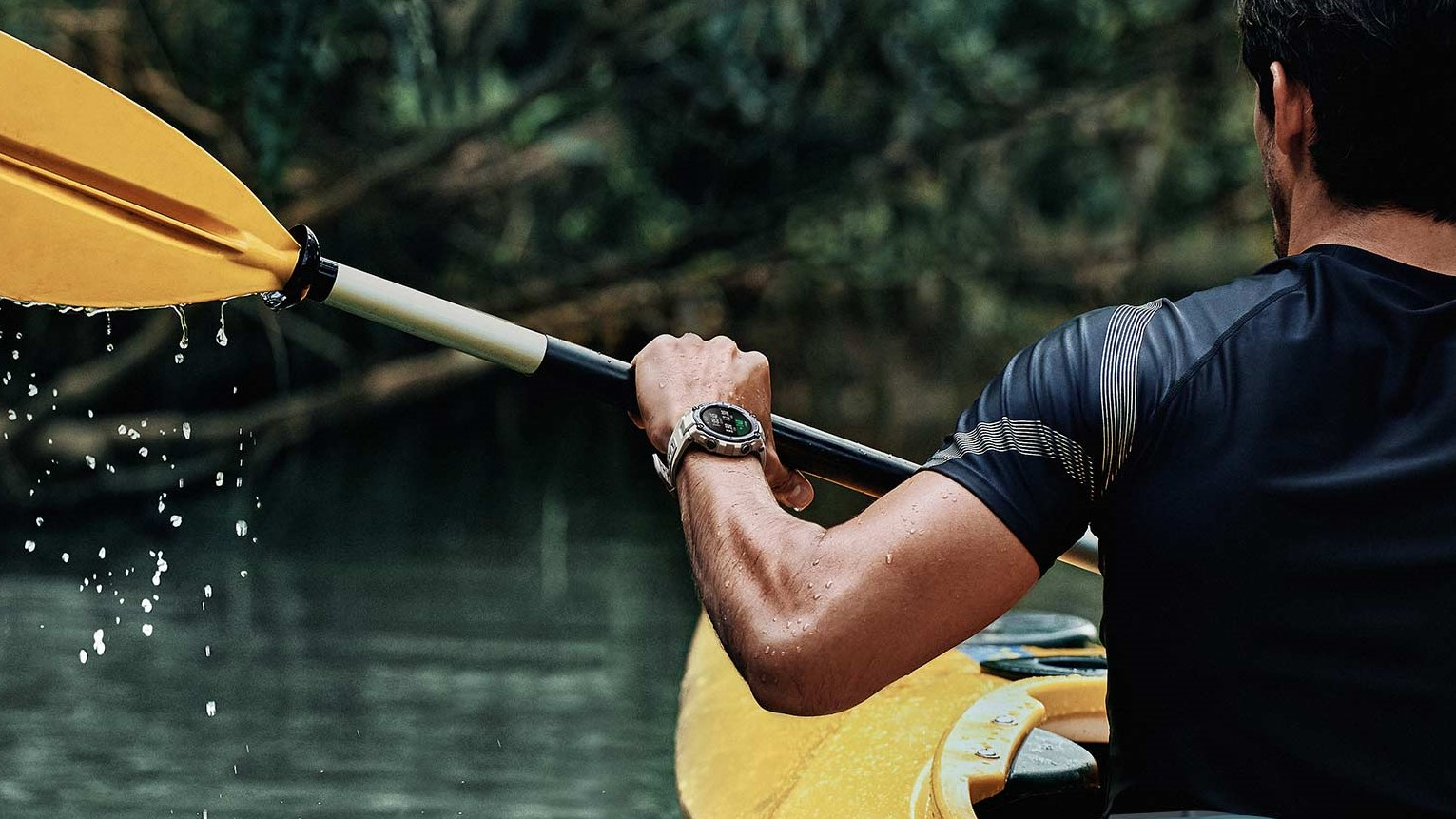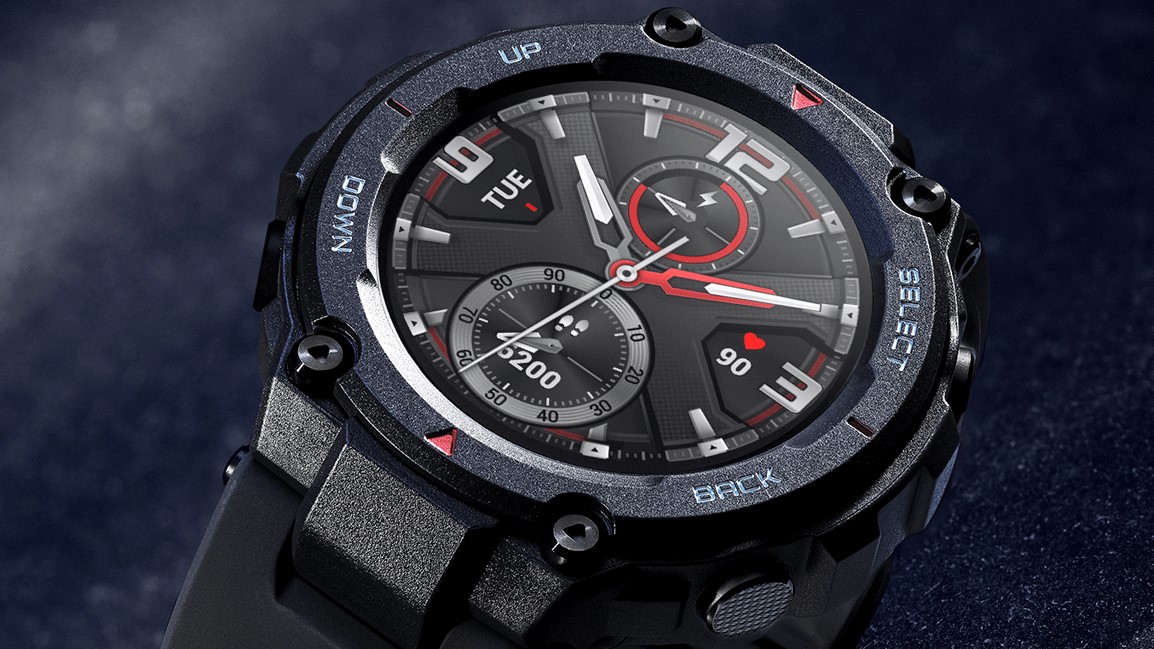
If you're trying to decide between the Amazfit T-Rex and T-Rex Pro, we're here to help you make the right choice.
The two watches look pretty much identical, but there are some important differences inside. For starters. the T-Rex Pro has a barometric altimeter, and will alert you to sudden changes in altitude. It also supports more satellite navigation systems, making it a better choice if you're going to be exploring internationally, and has much longer battery life in GPS tracking mode.
However, it's also considerably more expensive than the original T-Rex, which has seen some very steep discounts in since the launch of the T-Rex 2 in May 2022. If budget is your main concern, you'll be hard pressed to find a better GPS watch for the price.
If you've made up your mind, we've picked out the best prices for both watches right here. Otherwise, read on for the full lowdown.
Price
The Amazfit T-Rex launched in January 2020 for $139.90, though it can often be found much more cheaply. At the time of writing it's down to just $69.99 at Amazon.
The T-Rex Pro launched in March 2021 for the slightly higher price of $179.99. At the time of writing you can snap it up for $159.99 at Amazon, but we're likely to see steeper discounts now that the T-Rex Pro 2 has arrived.
Design
The Amazfit T-Rex and T-Rex Pro look nearly identical, and you'd be hard pressed to tell them apart at first glance. The main differences are simply the color options. The original T-Rex is available in army green, camo green, gray, black, and khaki, while the T-Rex Pro comes in black, gray, and steel blue. The outer bezel of the Pro is also sprayed with a fine metal coating.
All the latest inspiration, tips and guides to help you plan your next Advnture!
Both watches have a tough polymer case with large metal screws visible on the front. The case has a convex shape, which Amazfit says helps to prevent shock and protect key components. Buttons are made from textured metal, providing a little extra grip with wet or cold hands. and the band is made from soft silicone. The screen is covered with Corning Gorilla Glass 3 with a fingerprint-resistant coating.
The two watches are the same size (47.7 X 47.7 X 13.5mm), but the T-Rex Pro is ever so slightly heavier. It weighs at 59.4g including the strap, while the original T-Rex is 58g. That's not a difference you're going to notice.
If you're into watersports, you should know that the T-Rex Pro has a water resistance rating of 10ATM, whereas the original T-Rex is only rated to 5ATM. Both are fine for general swimming, but only the Pro is suitable for snorkelling. Neither should be worn for high-impact water activities.

Display
Both the Amazfit T-Rex or theT-Rex Pro have exactly the same color AMOLED touchscreen display. This gives them a real edge over many other GPS watches. Most sports watches use memory-in-pixel (MiP) displays, which are less vivid, but use slightly less power.
Both watches have an always-on display mode, though it's worth bearing in mind that this drains the battery much faster.
The displays of both Amazfit watches measure 1.3in diameter, with a resolution of 360x360 pixels. That's the same size as the Garmin Epix, but slightly lower resolution. The Epix packs in 416x416 pixels, resulting in crisper text and graphics.

Sensors
The T-Rex and T-Rex Pro have the same Huami BioTracker optical heart rate sensor. compass, and accelerometer. However, the T-Rex Pro also has a barometric altimeter. The watch will alert you to major changes in altitude, and suggest taking a blood oxygen saturation (SpO2) measurement.
Both watches have GPS and GLONASS support for navigation and location tracking, but the T-Rex Pro also BeiDou (the Chinese satellite navigation system) and Galileo (a satellite navigation system created and operated by the EU). If you're planning on globetrotting, the T-Rex Pro will therefore give you better coverage.

Fitness tracking
The Amazfit T-Rex comes with tracking modes for 14 different activities, while the T-Rex Pro has profiles for over 100. However, many of these only track time, heart rate, and estimated calories burned rather than providing data specific to that particular type of activity.
The T-Rex Pro can also automatically recognize and begin tracking eight different activities: walking, indoor walking, outdoor running, treadmill, outdoor cycling, rowing machine, elliptical, and pool swimming. This isn't a feature you get with the original T-Rex.
Both watches track sleep, but the T-Rex Pro gives you more advanced recovery metrics by monitoring your heart rate variability (HRV). This gives an insight into how well your body is responding to the demands of your daily life and activities.
Battery life
The Amazfit T-Rex and T-Rex Pro have the same 390mAh battery, but the differences in hardware mean different everyday performance. According Amazfit's figures, the T-Rex will run for around 20 days in typical use, while the T-Rex Pro will run for 18 days. Both of those figures are impressive for a mid-range AMOLED watch.
When it comes to GPS tracking, however, things are very different. While the T-Rex runs for up to 20 hours with GPS tracking enabled, the T-Rex Pro can run for up to 40 hours. If you're going to be off-grid for a while on a backpacking expedition, it may be worth paying the extra cash for the Pro.
- The best Garmin watches: find your ideal training tool, whatever your sport

Cat is the editor of Advnture, She’s been a journalist for 15 years, and was fitness and wellbeing editor on TechRadar before joining the Advnture team in 2022. She’s a UK Athletics qualified run leader, and in her spare time enjoys nothing more than lacing up her shoes and hitting the roads and trails (the muddier, the better), usually wearing at least two sports watches.
